What Is SearchBlox?
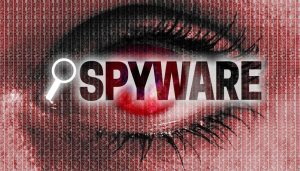 SearchBlox is a malicious browser extension for Google Chrome. In fact, there may be more than one variant of the extension circling the web, being advertised as a search platform for the Roblox video game. Instead of providing this functionality, the extension steals information from the browser related to Roblox and Rolimons, a trading platform by the same developer.
SearchBlox is a malicious browser extension for Google Chrome. In fact, there may be more than one variant of the extension circling the web, being advertised as a search platform for the Roblox video game. Instead of providing this functionality, the extension steals information from the browser related to Roblox and Rolimons, a trading platform by the same developer.
Roblox is an online game platform and game creation system developed by Roblox Corporation, as per Wikipedia. The game allows users to program games and play games created by other users. The game became more popular in the second half of the 2010s, and this popularity was then accelerated by the COVID-19 pandemic. This also explains why threat actors have developers malicious extensions taking advantage of the game’s popularity.
In fact, SearchBlox has sneaked into the Chrome Web Store several times, and has already been removed once. Unfortunately, the number of users who have already downloaded it is quite significant – at least 200,000 – and perhaps the number is growing. If you have already made the mistake of trusting the extension and downloading it from Chrome Web Store, continue reading to learn how to deal with this malware.

SearchBlox Extension Threat Summary
| Name | SearchBlox |
| Type | Malicious Browser Extension, Trojan, Malware |
| Short Description | The malware masquarades itself as a legitimate browser extension to try to trick you into downloading it. |
| Symptoms | You may not witness any direct symptoms. However, if the trojan has an adware component in its code, you may start experiencing unwanted ads and pop-ups. |
| Distribution Method | Phishing Emails, Unsafe browsing |
| Detection Tool |
See If Your System Has Been Affected by malware
Download
Combo Cleaner
|
SearchBlox Malware Installation Method
SearchBlox as well as other variants of the Trojan could be concealed as useful browser extensions promising useful functionalities related to the Roblox game platform. In addition, the malware may be spread via malicious email attachments, corrupted links and drive-by downloads. Other possible infiltration techniques may imply the usage of torrent clients and p2p (peer-to-peer) connections. Pirated software is yet another popular way for trojans to sneak into your operating system without being noticed.
To summarize, the main distribution channels of SearchBlox include the Chrome Web Store, as well as:
- The software method – masquerading as a useful program the user will eventually run.
- The unsafe browsing method – this involves you clicking on a suspicious link, ad or pop-up while browsing. The trojan could be using fake software updates or tech-support scams to trick you into installing it.
- The phishing method – corrupted email attachments, hyperlinks, websites – relying on the user’s negligence.
- The P2P file sharing, pirated software method – the employment of peer-to-peer sharing by malware creators could also be used.
Despite the fact that all of those risks are widely-known, users tend to forget how stealthy and cunning malware, and trojans specifically, can be.

Remove SearchBlox Malware
If you believe that your device was infected by the malicious SearchBlox extension, you should follow the steps below the article. SearchBlox may not be the most malicious trojan out there but it definitely puts your private and various online credentials at risk. If your banking password, for example, is obtained by cybercriminals, you may lose the funds stored in your bank account. Furthermore, the trojan may not be alone – other malware may also have entered the system alongside.
Preparation before removing SearchBlox.
Before starting the actual removal process, we recommend that you do the following preparation steps.
- Make sure you have these instructions always open and in front of your eyes.
- Do a backup of all of your files, even if they could be damaged. You should back up your data with a cloud backup solution and insure your files against any type of loss, even from the most severe threats.
- Be patient as this could take a while.
- Scan for Malware
- Fix Registries
- Remove Virus Files
Step 1: Scan for SearchBlox with SpyHunter Anti-Malware Tool
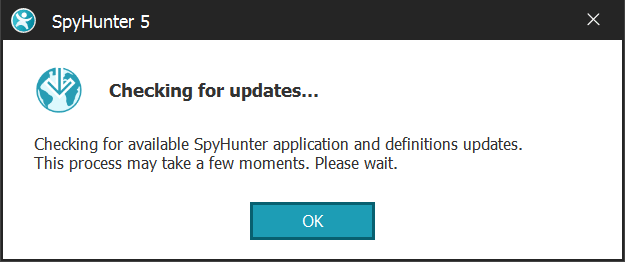

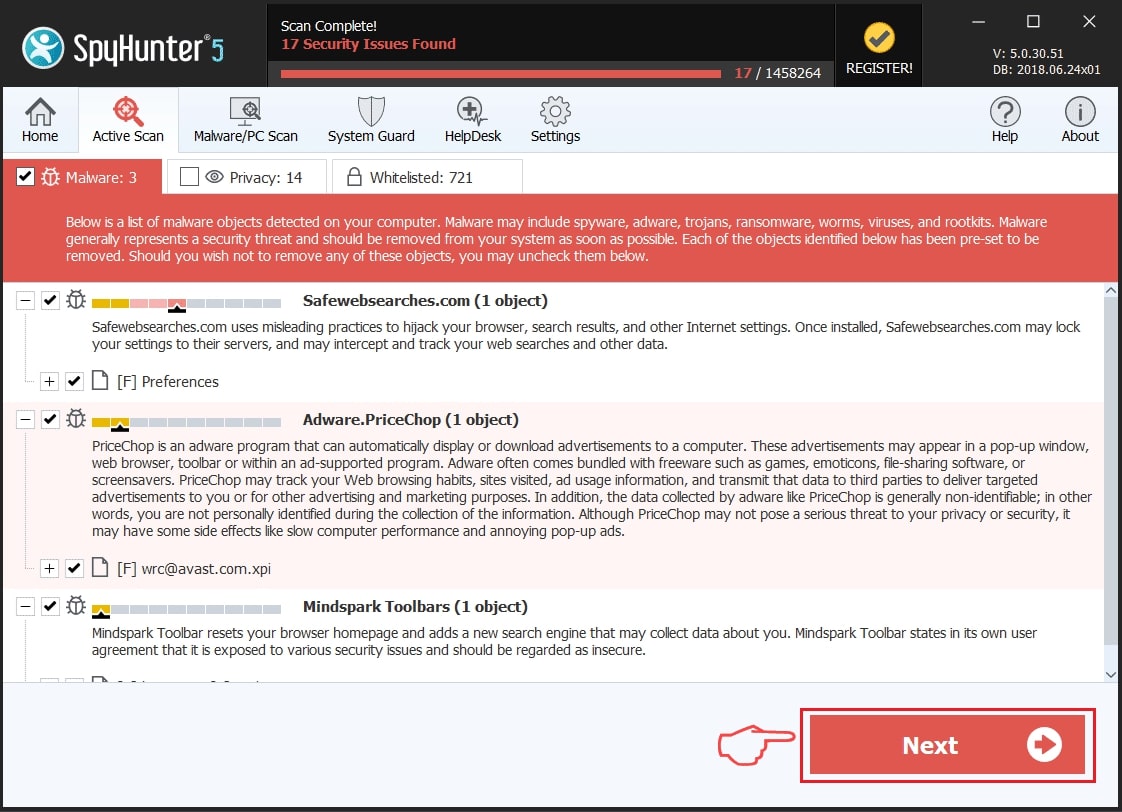
Step 2: Clean any registries, created by SearchBlox on your computer.
The usually targeted registries of Windows machines are the following:
- HKEY_LOCAL_MACHINE\Software\Microsoft\Windows\CurrentVersion\Run
- HKEY_CURRENT_USER\Software\Microsoft\Windows\CurrentVersion\Run
- HKEY_LOCAL_MACHINE\Software\Microsoft\Windows\CurrentVersion\RunOnce
- HKEY_CURRENT_USER\Software\Microsoft\Windows\CurrentVersion\RunOnce
You can access them by opening the Windows registry editor and deleting any values, created by SearchBlox there. This can happen by following the steps underneath:


 Tip: To find a virus-created value, you can right-click on it and click "Modify" to see which file it is set to run. If this is the virus file location, remove the value.
Tip: To find a virus-created value, you can right-click on it and click "Modify" to see which file it is set to run. If this is the virus file location, remove the value.Step 3: Find virus files created by SearchBlox on your PC.
1.For Windows 8, 8.1 and 10.
For Newer Windows Operating Systems
1: On your keyboard press + R and write explorer.exe in the Run text box and then click on the Ok button.
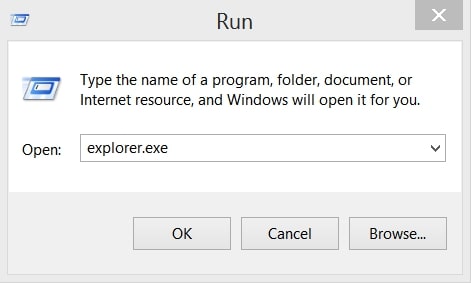
2: Click on your PC from the quick access bar. This is usually an icon with a monitor and its name is either “My Computer”, “My PC” or “This PC” or whatever you have named it.
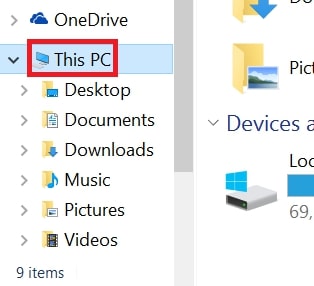
3: Navigate to the search box in the top-right of your PC's screen and type “fileextension:” and after which type the file extension. If you are looking for malicious executables, an example may be "fileextension:exe". After doing that, leave a space and type the file name you believe the malware has created. Here is how it may appear if your file has been found:
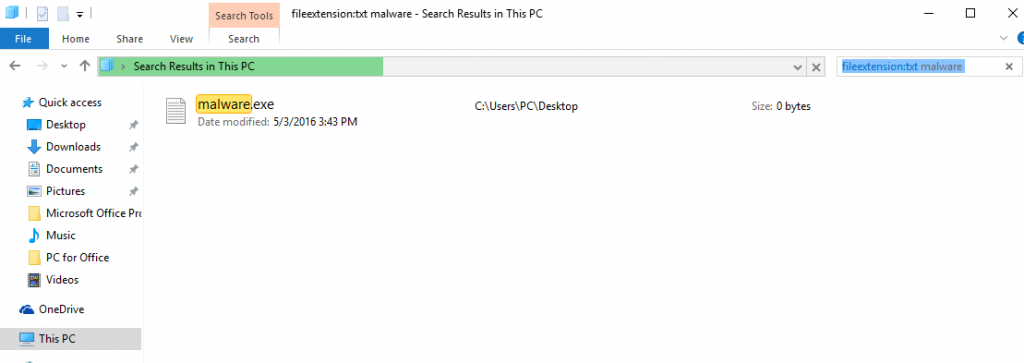
N.B. We recommend to wait for the green loading bar in the navigation box to fill up in case the PC is looking for the file and hasn't found it yet.
2.For Windows XP, Vista, and 7.
For Older Windows Operating Systems
In older Windows OS's the conventional approach should be the effective one:
1: Click on the Start Menu icon (usually on your bottom-left) and then choose the Search preference.
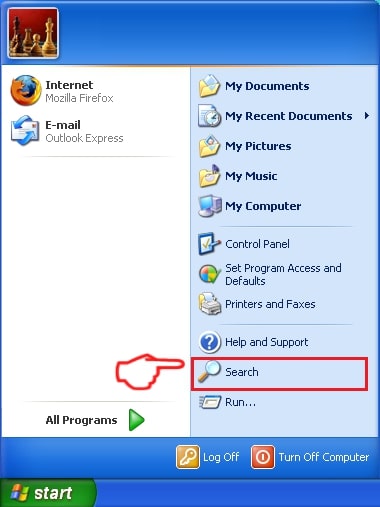
2: After the search window appears, choose More Advanced Options from the search assistant box. Another way is by clicking on All Files and Folders.
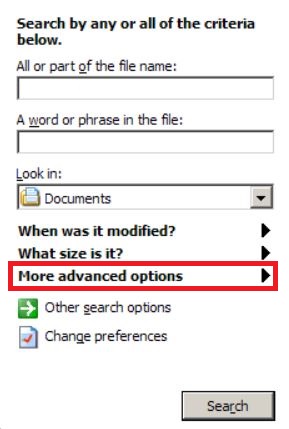
3: After that type the name of the file you are looking for and click on the Search button. This might take some time after which results will appear. If you have found the malicious file, you may copy or open its location by right-clicking on it.
Now you should be able to discover any file on Windows as long as it is on your hard drive and is not concealed via special software.
SearchBlox FAQ
What Does SearchBlox Trojan Do?
The SearchBlox Trojan is a malicious computer program designed to disrupt, damage, or gain unauthorized access to a computer system. It can be used to steal sensitive data, gain control over a system, or launch other malicious activities.
Can Trojans Steal Passwords?
Yes, Trojans, like SearchBlox, can steal passwords. These malicious programs are designed to gain access to a user's computer, spy on victims and steal sensitive information such as banking details and passwords.
Can SearchBlox Trojan Hide Itself?
Yes, it can. A Trojan can use various techniques to mask itself, including rootkits, encryption, and obfuscation, to hide from security scanners and evade detection.
Can a Trojan be Removed by Factory Reset?
Yes, a Trojan can be removed by factory resetting your device. This is because it will restore the device to its original state, eliminating any malicious software that may have been installed. Bear in mind that there are more sophisticated Trojans that leave backdoors and reinfect even after a factory reset.
Can SearchBlox Trojan Infect WiFi?
Yes, it is possible for a Trojan to infect WiFi networks. When a user connects to the infected network, the Trojan can spread to other connected devices and can access sensitive information on the network.
Can Trojans Be Deleted?
Yes, Trojans can be deleted. This is typically done by running a powerful anti-virus or anti-malware program that is designed to detect and remove malicious files. In some cases, manual deletion of the Trojan may also be necessary.
Can Trojans Steal Files?
Yes, Trojans can steal files if they are installed on a computer. This is done by allowing the malware author or user to gain access to the computer and then steal the files stored on it.
Which Anti-Malware Can Remove Trojans?
Anti-malware programs such as SpyHunter are capable of scanning for and removing Trojans from your computer. It is important to keep your anti-malware up to date and regularly scan your system for any malicious software.
Can Trojans Infect USB?
Yes, Trojans can infect USB devices. USB Trojans typically spread through malicious files downloaded from the internet or shared via email, allowing the hacker to gain access to a user's confidential data.
About the SearchBlox Research
The content we publish on SensorsTechForum.com, this SearchBlox how-to removal guide included, is the outcome of extensive research, hard work and our team’s devotion to help you remove the specific trojan problem.
How did we conduct the research on SearchBlox?
Please note that our research is based on an independent investigation. We are in contact with independent security researchers, thanks to which we receive daily updates on the latest malware definitions, including the various types of trojans (backdoor, downloader, infostealer, ransom, etc.)
Furthermore, the research behind the SearchBlox threat is backed with VirusTotal.
To better understand the threat posed by trojans, please refer to the following articles which provide knowledgeable details.


